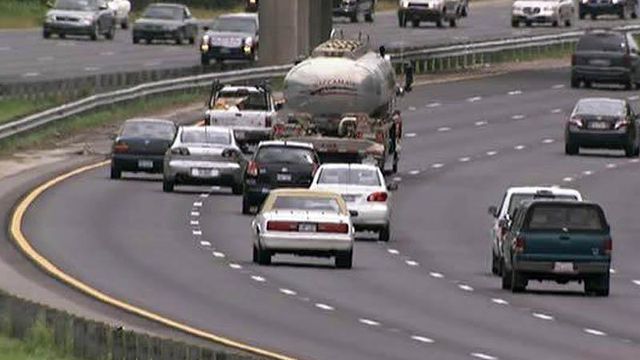Slowing economy speeds up Triangle traffic
North Carolina's average daily traffic count fell 3.3 percent in 2008. "You have fewer people working, meaning fewer people (are) traveling every day," a DOT engineer said.
Posted — UpdatedNorth Carolina's average daily traffic count fell 3.3 percent in 2008, according to Federal Highway Administration data. Traffic figures also fell nationwide, which experts said reversed a 24-year trend of more cars driving more miles.
So far this year, the number of vehicle-miles driven in North Carolina has dropped more than 2 percent, according to the highway administration. Nationwide, the decrease is more than 1 percent.
Jim Dunlop, a traffic congestion management engineer with the state Department of Transportation, said fewer cars and shorter distances traveled – even the small percentages noted – translate into less congestion on Triangle highways, especially during rush hour.
"I've not seen traffic impacted quite like we have now," Dunlop said. "There are fewer delays."
Record gas prices last year likely started the trend, he said, as people switched to car pools and mass transit to save money. But he credits the economic downturn for opening up most of the bottlenecks.
"You have fewer people working, meaning fewer people (are) traveling every day," he said.
WRAL traffic reporter Brian Shrader said he can see the change when reporting on morning commutes.
"Business is a lot lighter in the traffic department these days," Shrader said. "We're still seeing delays, but again, you used to be able to count on them every morning. You were going to see the same kinds of problems in the same places. Now, (those delays are seen) half the time, maybe."
DOT roadway sensors show that traffic fell during peak morning and afternoon periods on Interstate 40 near Jones Sausage Road by 1.2 to 2.4 percent from April 2007 to last month. Likewise, traffic on Capital Boulevard near the Triangle Town Center mall dropped by up to 2.2 percent during peak hours and by 2.2 to 3.4 percent on weekends – DOT officials said the latter figures likely reflect a slowdown in retail sales during the recession.
Beth Osborne passes the I-40 junction with Jones Sausage Road every weekday on her 36-mile commute between her home in Smithfield and her job in Raleigh. She said she's noticed traffic on the U.S. Highway 70 Bypass has been lighter in recent months and the back-ups on I-40 haven't been as long.
"The drive is less hectic, and I'm not as stressed when I get to work," Osborne said, noting she has been able to shave five to 10 minutes off her average 45-minute commute. "It's good to get to work and have a few minutes before you're officially there."
DOT engineers said they don't think the lighter traffic volumes will have a major impact on infrastructure needs, although some projects could be delayed. When the economy comes back, they note, so will the congestion.
• Credits
Copyright 2024 by Capitol Broadcasting Company. All rights reserved. This material may not be published, broadcast, rewritten or redistributed.





